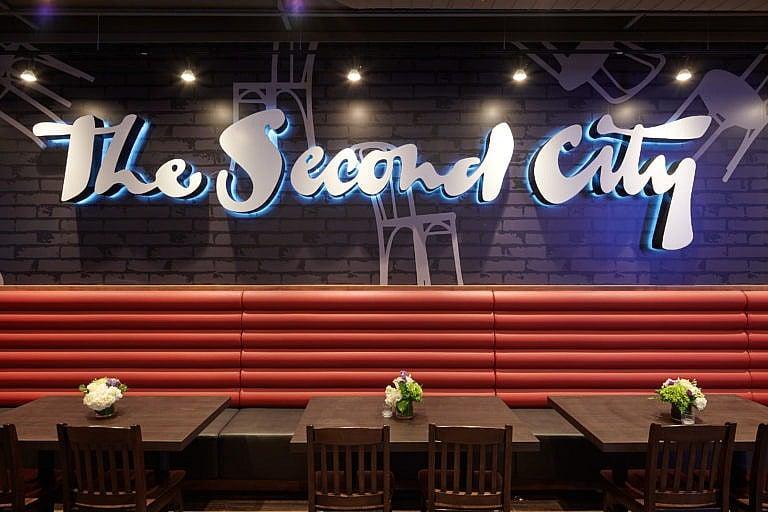Inside the new Toronto home of The Second City
Behind-the-scenes of the legendary improv theatre’s 30,000 square-foot downtown facility

Share
In 1973, The Second City opened its first Canadian location on Adelaide Street East in Toronto. A year later, it moved to an old firehall downtown, which became a long-standing icon of the improv group in the city. Comedy would never quite be the same after that. The Second City quickly became an incubator for some of the funniest people in history, including John Candy, Eugene Levy, Martin Short, Catherine O’Hara and Mike Myers.
And when Saturday Night Live debuted, in 1975, it borrowed a handful of cast members from The Second City, tapping into a definitive source of laughter. Soon after, The Second City launched its own show, SCTV, beaming iconic characters like Bob and Doug McKenzie across the Canadian airwaves. Canada was the butt of every joke—in the best way possible.
Then something funny (or maybe not) happened. In 1997, The Second City moved from the aging firehall into a bigger, better venue in downtown Toronto, with a training centre and a 350-seat theatre. By 2020, after changing Toronto locations on a couple of occasions, The Second City closed its doors to make way for a condo.
But there’s reason to smile again: the Second City just opened a new Toronto location, with three theatres and nine studio classrooms, where the latest class of jokesters could hone their comedic sensibility. The nearly 30,000 square foot space, located at One York Street, also features a restaurant by top-class hospitality group Oliver & Bonacini. Here’s a look inside the new, improved Second City.


The entrance to The Second City is located near the corner of Harbour and York. It’s right off the PATH, making it easily accessible for the cast members, students and visitors.
On the exterior of the building, at the entrance, there’s a distinctive red chair and a bunch of sitting silhouettes. The red, bentwood chair has been the logo of The Second City since the beginning, dating back to its first Chicago location in 1964. They’re a mainstay of every stage. Improv scenes at The Second City can take place anywhere—outer space, the Sahara, a train car—but the bentwood chair always remains the same.

The Second City is located on the third floor of the building, accessible via escalator or elevator. There are three bars and a restaurant up here, along with The Second City’s three improv stages and nine training centres.

There’s banquette seating near the bar. Here, guests can enjoy food by Oliver & Bonacini, made in a kitchen on-site.

This is one of the three bars at The Second City. “It’s true that the more audience members drink, the funnier we get on stage,” says Carly Heffernan, creative director of The Second City Toronto. Above the bar, a neon sign reads, “Yes, And…” That’s a reference to the golden rule of improv, whereby participants are supposed to accept their partner’s suggestion and add something to it.

Here’s another bar,.

To the right, the main desk, where guests can buy tickets, ask for information or purchase some merchandise. Tickets for shows range in price from $29 to $69, t-shirts and sweaters cost anywhere from $20 to $40. To the left, it’s Theatre ’73, named after the year The Second City was founded in Toronto.

Check out the inside of Theatre ’73. It was created by set designer Camellia Koo to look like the exterior of The Second City’s first Toronto location, The Old Firehall, at 110 Lombard Street. (Hence the brick and big red doors.) The maximum capacity in this room is 160.

This is the Main Stage, also designed by Camellia Koo. It looks sort of futuristic. The lights on the stage are LED. “They can change colour, flash and move throughout a performance,” says Heffernan. “It’s a party set.” The main stage is where The Second City’s primary cast performs eight shows a week. Max capacity: 244.

Comedy nerds will love the John Candy Box Theatre, the student performance space. It features original floorboards from The Old Firehall. “When students are on stage, they’re quite literally following in the footsteps of comedy greats,” says Heffernan. “John Candy, Catherine O’Hara and Eugene Levy all walked across those floorboards.”